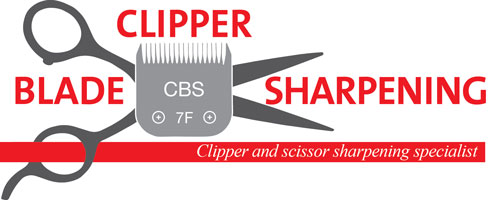Clipper Blade Care
At the end of the day, gather all blades that have been used and use a force dryer, air compressor or similar to blow all the hair from them. Take a pipe cleaner or similar and slide it under the cutter, side to side, and get the hair from under it. Clean the blades with a high quality blade wash, like H-42, and put a few drops of oil on the teeth of the blades. This practice alone will prolong the life of your blades significantly. Be sure to store them in a moisture-free environment. If you are a mobile groomer, always store your blades in an airtight container with silica packets in it to help absorb excess moisture.
About Spray Coolants
Spray coolants all contain roughly the same things, Trichloroethane (brake cleaner), glycol, CO2 and water, and very little lubricant. These products do exactly what they were manufactured to do and that is cool the blade. There is not enough lube in spray coolants to use them as a base for blade care. Rather than using coolants it is strongly advised that you have 2 or more of each of your most used blades, so that you can swap them out during a groom before they get hot enough to damage them.
About Build Up
Build up comes from a lot of places, mostly the melting of pet dander, and sometimes moisture from the coat if it isn’t completely dry. If this build up is ignored it will cause the cutter to lift up from the comb side of the blade, and the blade will start to drag. Build up will also cause the cutter to become difficult to slide back and forth, causing greater friction and therefore heat. When this happens many groomers spray it with spray coolants, which are mostly solvent and water. The solvent breaks down the build up for a few minutes and gives you that happy feeling of it actually cleaning and lubricating the blade. Spray coolants don’t clean and they don’t lubricate. They are a quick fix to keep you going and are definitely NOT recommended at all.
About Blade Wash
H-42 is one of the best blade washes on the market. It was specifically designed to clean the build up off clipper blades. With the clipper running dip the blade into a shallow dish of H-42 just deep enough to cover the blade for a few seconds. When you take it out let it drip off with the clipper upright (blade facing down). If you turn it so that the blade is higher than the clippers the wash can run into the clipper and damage it. Alternatively, turn off the clippers and wipe with a soft cloth or paper towel. H-42 not only cleans this build up off, but will lubricate the blade as well. Get the H-42, it is worth it. You can also use H-42 in blade cleaning tubs, or just a sealed container, and gently slosh it around. Wipe off the excess and store your blades as usual, ensuring you wipe the rest off before first use the next day.
About Oiling
How much oil should you use? With today’s new clippers having higher speeds that produce more heat, oiling often is even more important. If the blade gets dry it will cause more friction, and more heat. So, the more you oil your blades the less chance there is of overheating the blade, causing the cutting surfaces to dull quickly. Heat can also be controlled by changing between blades as mentioned above.
About Blade Rust
What causes blades to rust? Plating loss leads to rust. Rough dog hair, leaving your blades wet, corrosive build up caused by spray coolants and dog dander, will contribute to plating loss. When the plating is worn or chipped, rust can then be a factor.
Can rusty blades be salvaged? Usually; but if the cutting surfaces and teeth are deeply rusted and pitted the blade is not able to be saved.

